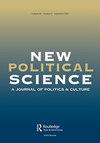Beyond Gerrymandering: A Structural Crisis of the American Electoral System
IF 0.5
Q4 POLITICAL SCIENCE
引用次数: 0
Abstract
Abstract Two key threats facing American democracy today are gerrymandering and voter suppression. In this article, I argue that both of these threats are a direct consequence of the US using a single-member district (SMD) electoral system. This is because SMD creates significant asymmetrical disproportionality, which is a type of electoral bias that can benefit larger parties over smaller parties. This bias leads to the two largest parties in the US winning more seats than their popular vote, which in turn leads to these parties gaining significant resource advantages over smaller parties. This sets off a self-reinforcing system that keeps these larger parties in power and squeezes out the smaller parties, a process that is especially potent when this dynamic is not offset by public funding of electoral campaigns. The resource advantages that result from such bias include control over government policy, which makes it easier for the larger parties to manipulate election laws to their advantage, including through gerrymandering and voter suppression.超越选区划分:美国选举制度的结构性危机
摘要当今美国民主面临的两个主要威胁是不公正的选区划分和选民压制。在这篇文章中,我认为这两种威胁都是美国使用单一成员区(SMD)选举制度的直接后果。这是因为SMD造成了显著的不对称不均衡,这是一种选举偏见,可以使较大政党比较小政党受益。这种偏见导致美国最大的两个政党赢得的席位超过了他们的普选,这反过来又导致这些政党比较小的政党获得了显著的资源优势。这引发了一个自我强化的体系,使这些较大的政党继续掌权,并排挤较小的政党,当这种动态没有被竞选活动的公共资金所抵消时,这一过程尤其有效。这种偏见带来的资源优势包括对政府政策的控制,这使得大党更容易操纵选举法,包括通过不公正的选区划分和选民压制。
本文章由计算机程序翻译,如有差异,请以英文原文为准。
求助全文
约1分钟内获得全文
求助全文

 求助内容:
求助内容: 应助结果提醒方式:
应助结果提醒方式:


